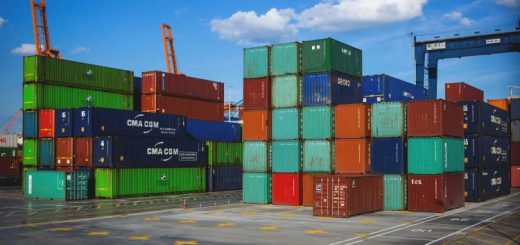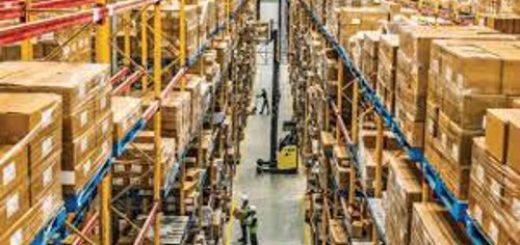India’s Commercial Vehicle Sector Explores Green Options
The Indian commercial vehicle industry is exploring multiple pathways to achieve sustainability and reduce emissions. While electrification has made significant inroads in certain segments, decarbonizing medium- and heavy-duty trucks and buses remains a significant challenge. The adoption of electric vehicles (EVs) in India has been steadily increasing, particularly in the city bus and last-mile delivery segments. In 2022, commercial EV sales grew by an impressive 169 percent, driven by the demand for electric buses and three-wheelers. Many cities now prioritize electric buses over CNG buses in their tenders, as they are seen as a more environmentally friendly option.
The last-mile transportation sector has also witnessed a surge in electrification, fueled by the e-commerce industry and urban institutional buyers. Electric three-wheelers and load-bearing electric scooters dominate this segment. Additionally, the battery-powered mini-truck segment (small commercial vehicles) is emerging, with leading manufacturers like Tata Motors, Ashok Leyland, EKA Mobility, and Eicher entering the fray.
However, the backbone of commercial transportation in India – medium- and heavy-duty trucks and buses – remains largely untouched by electrification. The high payload capacities and maximum uptime requirements of these vehicles pose significant challenges for battery-electric technology. The added weight of battery packs negatively impacts payload and range capabilities, while the lack of adequate charging infrastructure on highways and remote areas further hinders adoption.
To address this challenge, the industry is exploring alternative technologies, such as hydrogen internal combustion engine (H2-ICE) technology. H2-ICE holds immense potential for decarbonizing these segments while paving the way for future battery-electric and hydrogen fuel-cell technologies in the long run.
As the demand for long-haul and heavy transportation continues to grow, the inability of these critical segments to transition to cleaner technologies remains a significant hurdle in India’s clean mobility journey. The industry’s exploration of multiple pathways, including hydrogen and other emerging technologies, is crucial to achieving a sustainable and low-emission future for commercial transportation in the country.
Another pathway being explored for electrification is hydrogen fuel-cell powertrains, which can generate electricity on-board to power electric motors. However, fuel-cell technology faces similar challenges, such as high costs, performance limitations, and a lack of hydrogen infrastructure. Additionally, the absence of emission-free ‘green hydrogen’ production in countries like India has hindered the adoption of fuel cells in the automotive industry’s electrification efforts.
Recognizing these challenges, Indian commercial vehicle (CV) manufacturers have discovered unique and practical pathways to decarbonize heavy trucks and buses. Recent automotive events, such as the Auto Expo 2023 and the Bharat Mobility Global Expo 2024, showcased innovative and practical products that push the heavy-vehicle industry beyond conventional low-carbon technologies like CNG and LNG.
One of the most promising technological advancements in the CV space is hydrogen internal combustion engine (H2-ICE) technology. By using hydrogen as a fuel in modified internal combustion gas engines, this technology holds immense potential for eliminating fossil fuel use and carbon emissions in heavy-duty segments where battery-electric and fuel-cell technologies are currently impractical. Major Indian CV manufacturers, such as Tata Motors and Ashok Leyland, unveiled their iterations of H2-ICE technology for heavy trucks at the Auto Expo 2023.
H2-ICE technology presents several advantages for CV makers. Firstly, these engines are largely similar to existing CNG engines, requiring modifications to components like the engine head, fuel ignition system, and control electronics. This similarity facilitates a smoother transition for manufacturers and suppliers without significant changes to their product and sourcing strategies, mitigating cost escalation.
Secondly, since pure hydrogen does not contain carbon, H2 engines eliminate carbon-based emissions like carbon monoxide, hydrocarbons, and carbon dioxide. While they still produce nitrogen oxides (NOx), H2-ICE technology holds significant relevance in developing markets like India, enabling a transition away from polluting diesel engines and paving the way for future adoption of fuel-cell and battery-electric technologies in the long run.
By embracing innovative solutions like H2-ICE technology, the Indian CV industry is actively exploring practical pathways to decarbonize heavy-duty transportation, addressing the challenges faced by current electrification technologies while laying the groundwork for a sustainable and low-emission future.
Thirdly, the Indian CV industry is optimistic about benefiting from the country’s ambitious green hydrogen production strategies. With India ramping up investments in clean, emission-free hydrogen production, energy experts predict that the heavy transport segment could emerge as one of the initial consumers of locally produced hydrogen energy.
However, battery-electric and hydrogen fuel-cell technologies are not being overlooked in the Indian context. At recent automotive exhibitions, OEMs continued to expand their reach in these technologies with improved range and performance. Tata Motors has broadened its EV portfolio with a battery-powered heavy tractor, tipper, and intermediate electric truck, while Ashok Leyland is integrating battery-electrics into its heavy-duty ‘AVTR’ platform.
Interestingly, long-haul battery buses for inter-city passenger transportation have emerged rapidly. Major bus manufacturers like Tata Motors, JBM, and Eicher Motors have developed electric inter-city coaches with a respectable driving range of around 250 km, suitable for average inter-city travel in India.
The Indian OEMs are also pursuing hydrogen fuel cells alongside hydrogen engines. Ashok Leyland has secured commercial orders for its hydrogen fuel-cell bus and heavy truck, while Tata Motors has enabled India’s first fuel-cell bus and developed a new fuel-cell heavy-duty tractor.
Overall, the Indian CV industry is exploring multiple pathways toward decarbonizing heavy-duty truck and bus segments, including low-carbon CNG and LNG fuels in the short-run, ‘zero-carbon’ hydrogen ICE technology in the mid-term, and battery-electric and hydrogen fuel cells in the long-run. Given the dynamic and price-sensitive nature of the heavy vehicle market, a ‘technology-agnostic’ approach to decarbonization and zero-emission is prudent for OEMs and technology suppliers.




Recent Comments